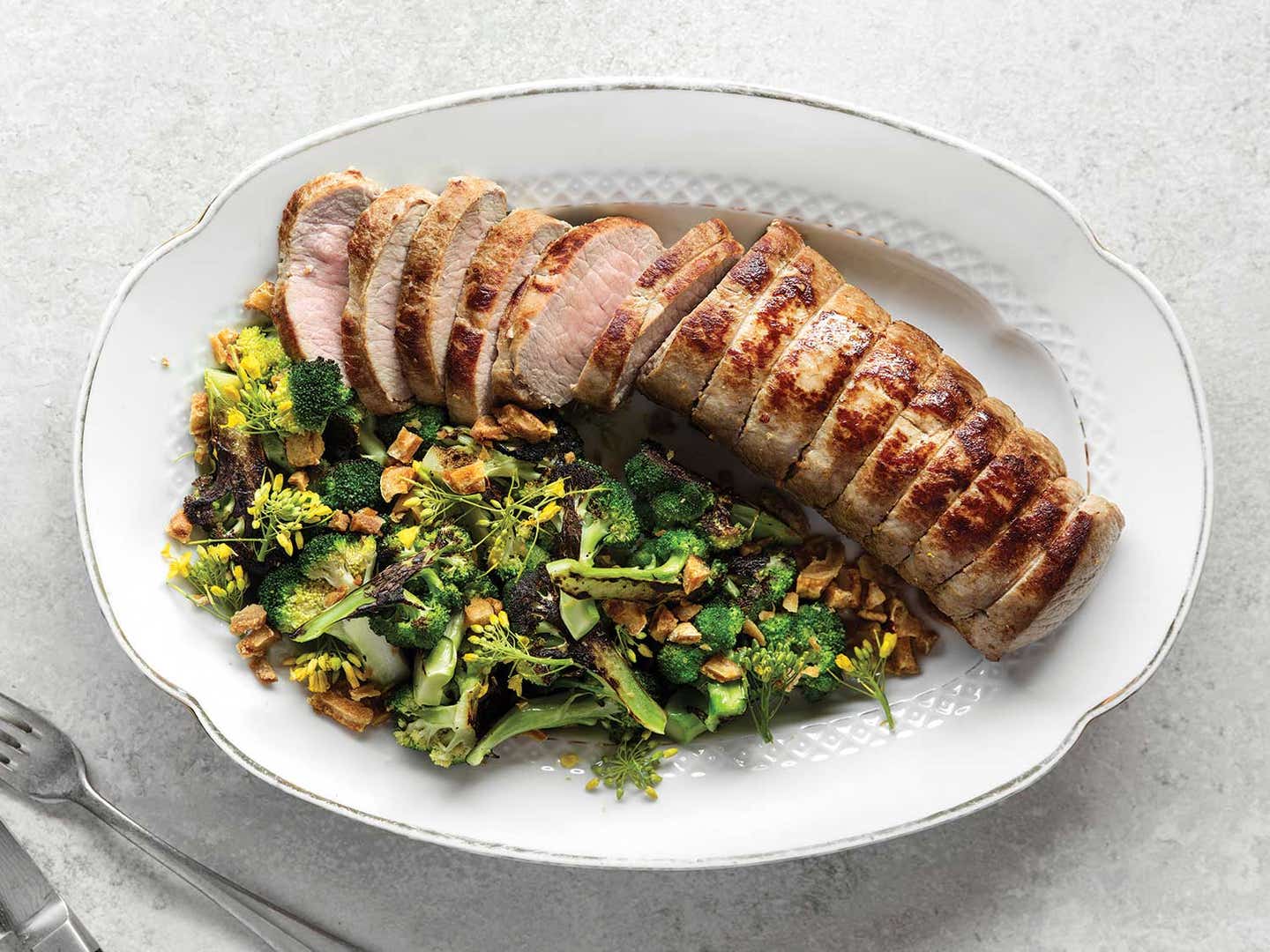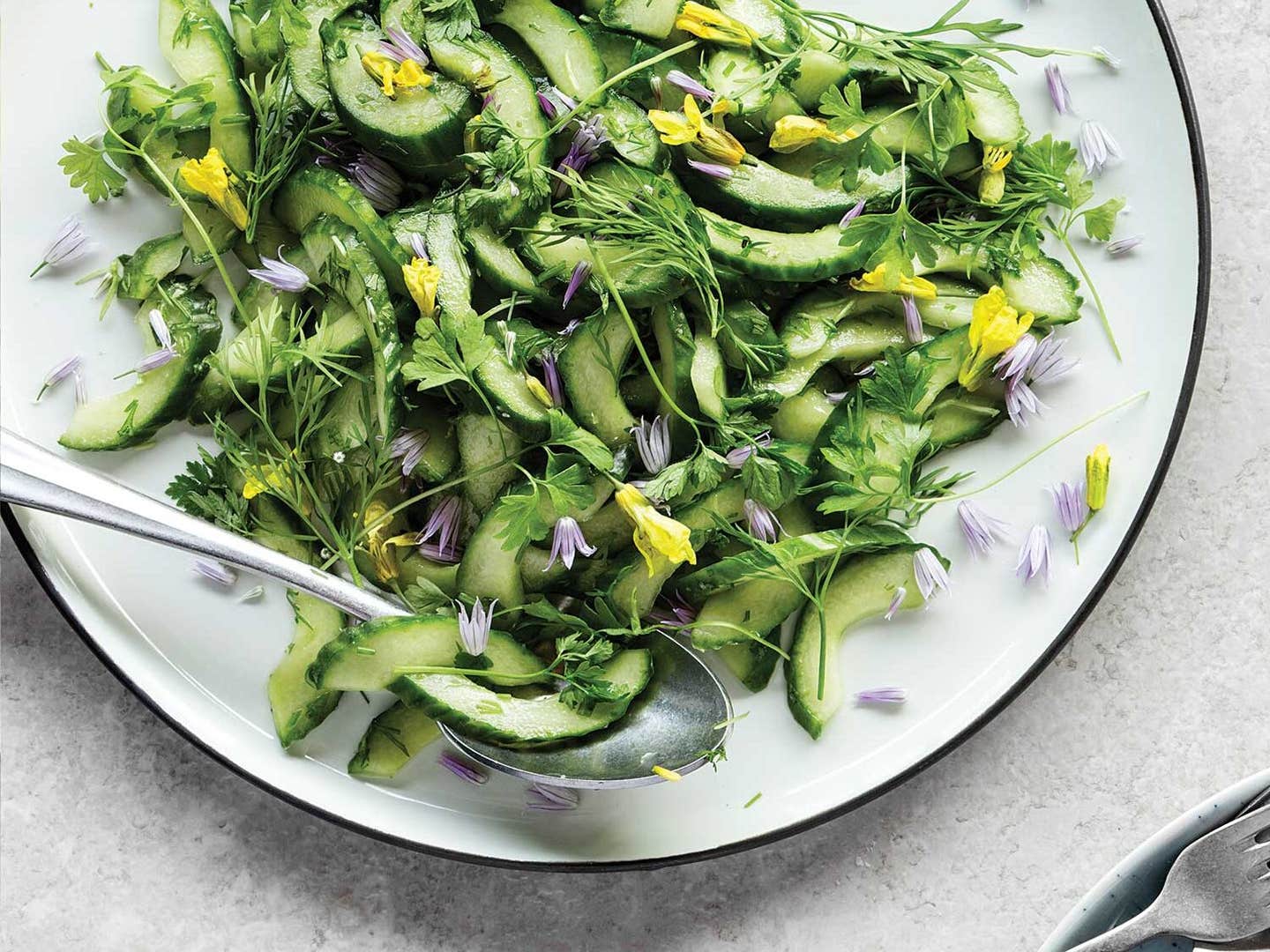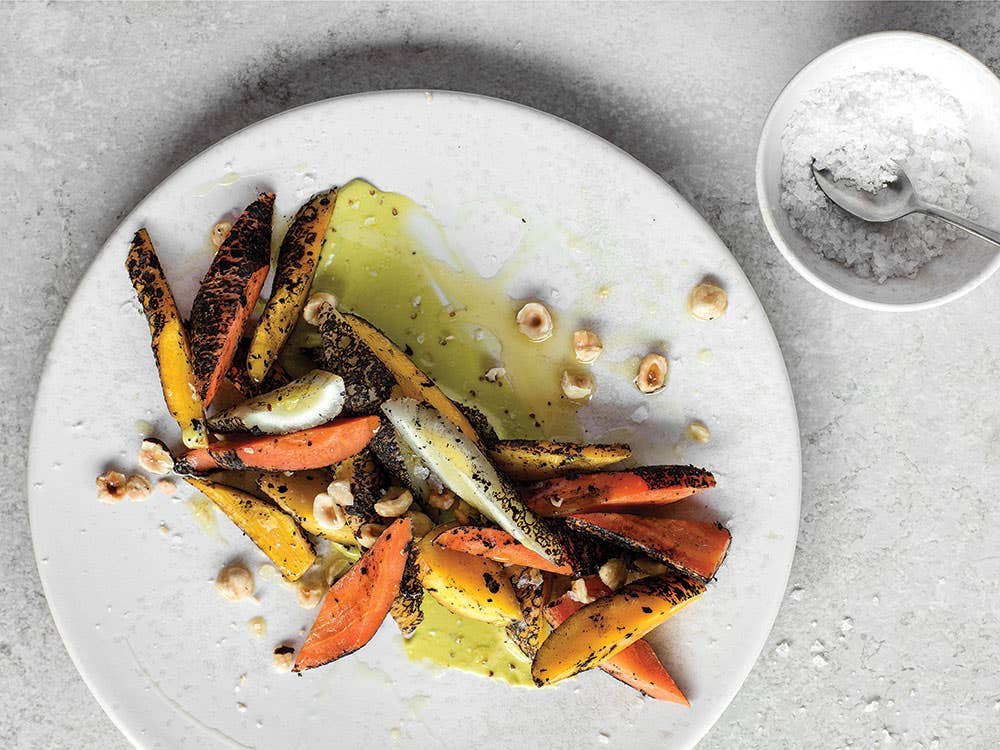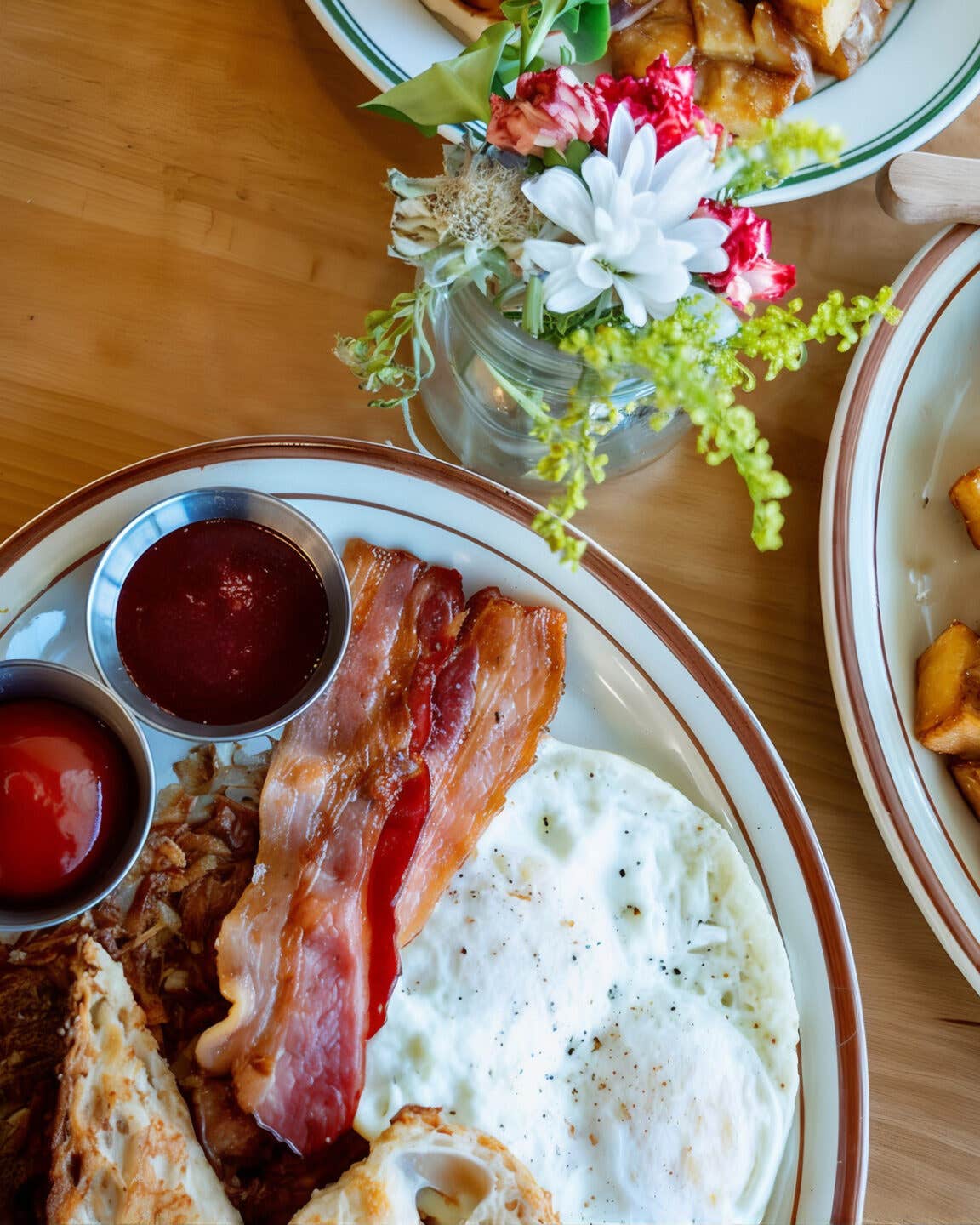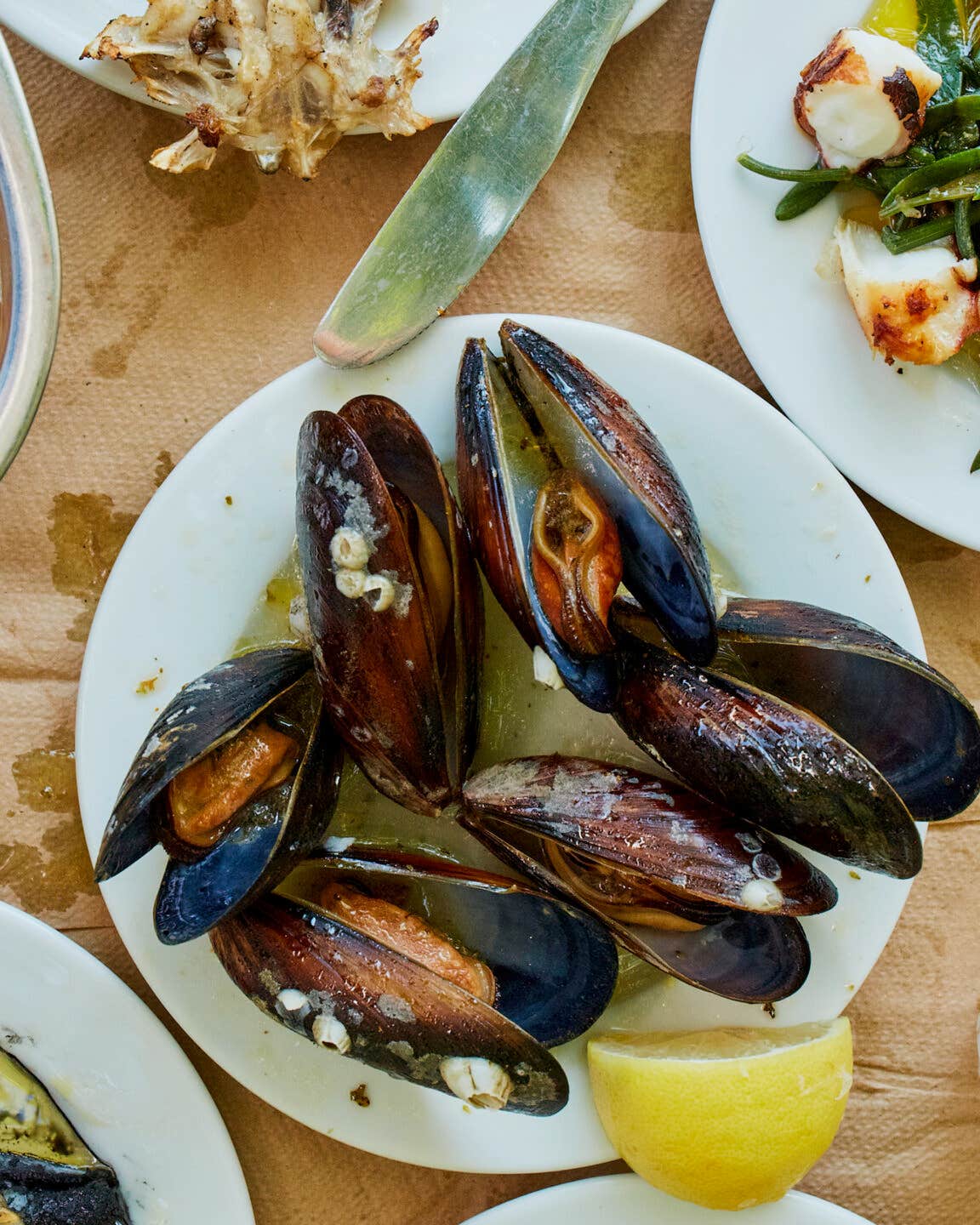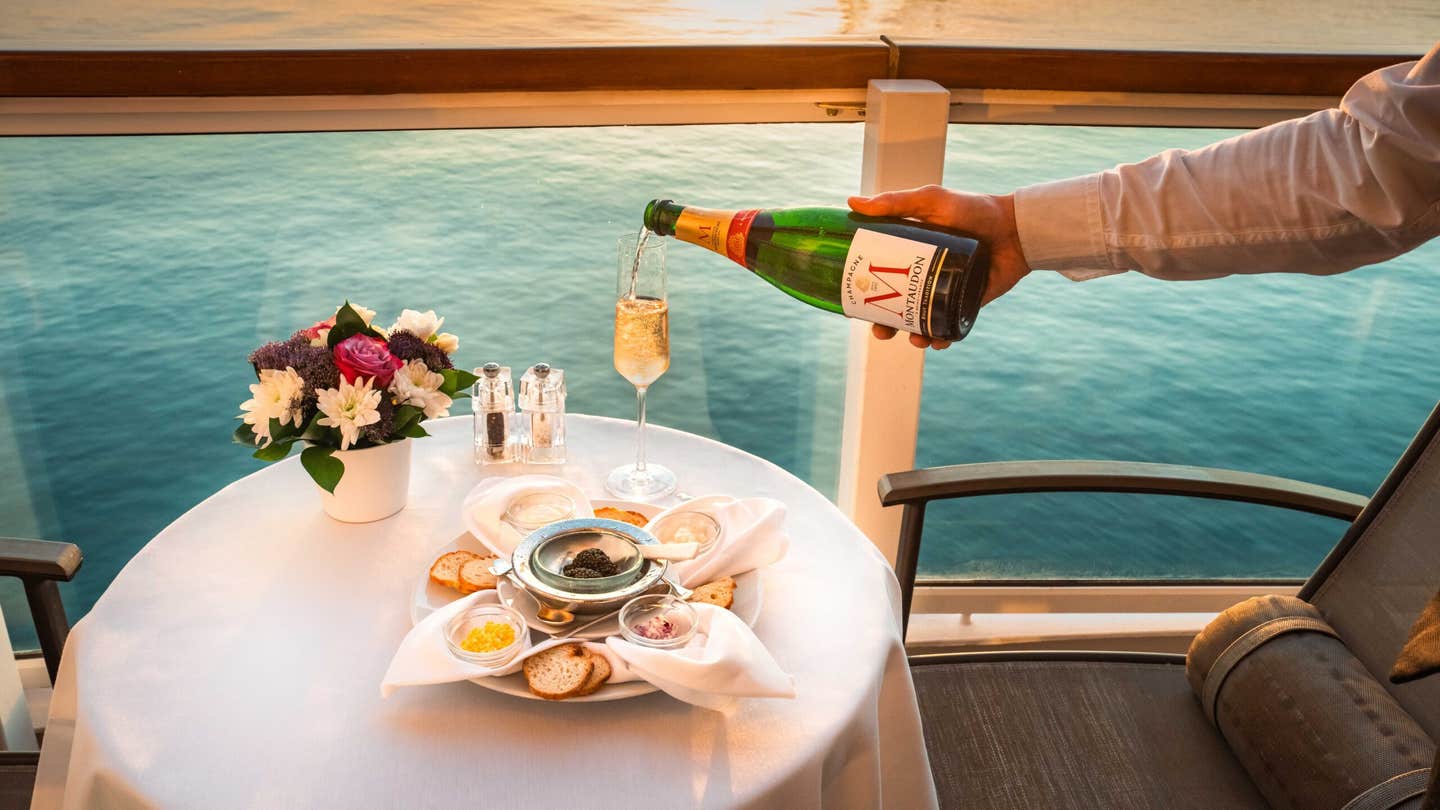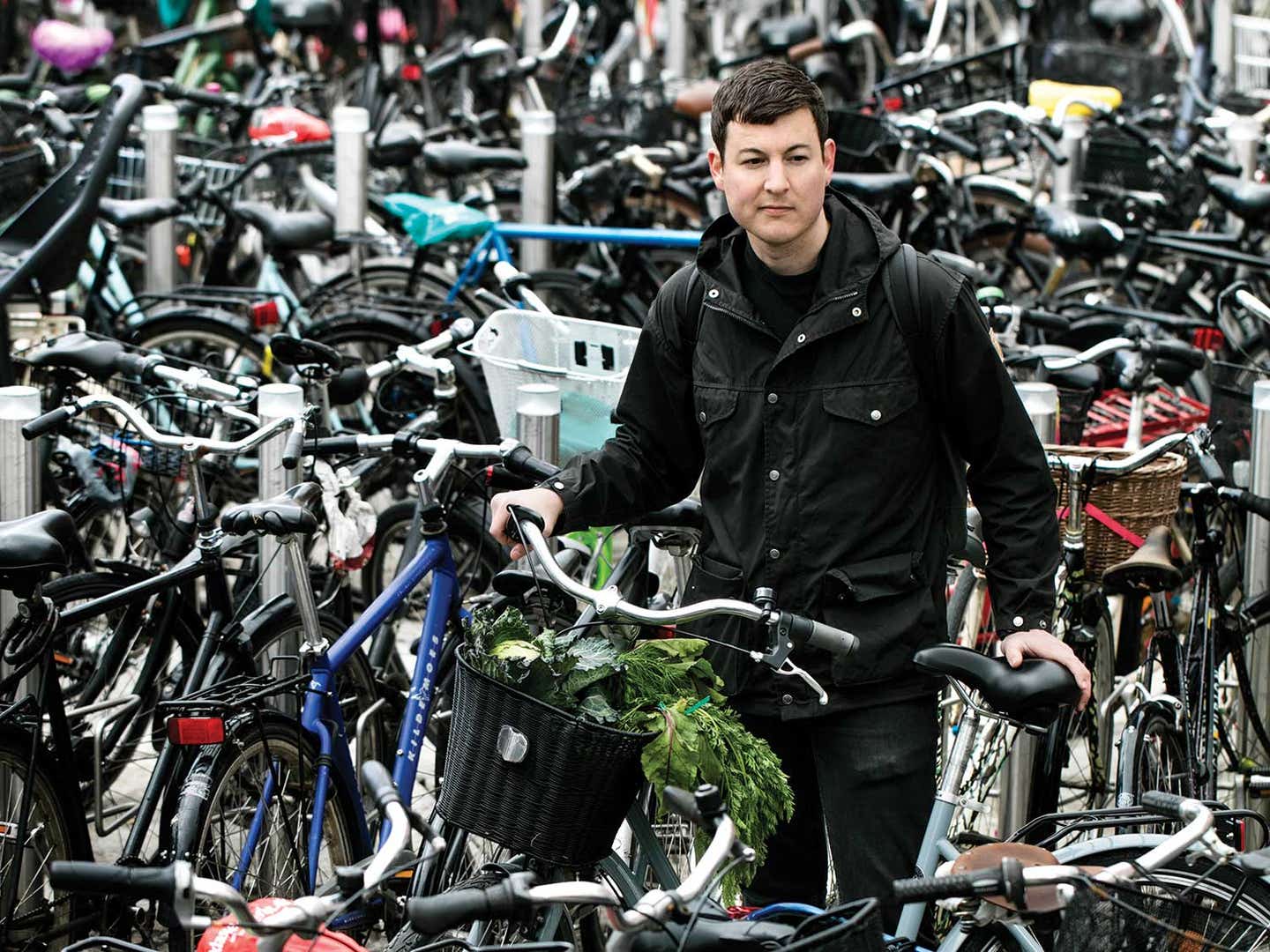
What Would it Take for an American Guy to Become Danish?
Saveur’s resident Scandiphile eats and drinks his way through Copenhagen in search of cultural transformation
“What is a good kiss?”
Chef Bo Bech and I are sitting on the canal-side patio of his restaurant Geist talking about what makes a Dane a Dane. He’s greeted me with a steady gaze that makes me feel, too much so, seen. I’ve met him for drinks (lemon-thyme cocktails—he’s decided for us both) so he can help me understand what it is that makes his fellow countrypeople tick.
I travel a lot, but I keep coming back to Copenhagen. On each trip I’ve noted and envied the invincibly chill vibes of this fine city, and each time I’ve returned home with arms full of asymmetric T-shirts and clean-lined ceramics hoping to infuse my New York life with some semblance of Nordic order and ease.
This time, I explain to Bo, I want more. I’m back in town with the earnest, specific (and probably impossible) goal of going native, of turning myself into a Dane.
What this has to do with kissing I don’t know—but Bo is studying my face, waiting for a reply.
No teeth? Good breath?
“What is a good kiss?” Bo asks again, resolutely unmoved by my attempts to solve his riddle.
When you just know?
Bo nods. It’s thoughtless, organic. Natural. It’s his way of explaining the state of being Danish.
“To be Danish,” Bo says, “is to be present. To go with the flow. Go explore! When I go somewhere, I want an authentic, emotional, punishing experience. I want a fist in the face.”
I do not want a fist in my face, but I see his point. Lesson one: Have a wide open mind.
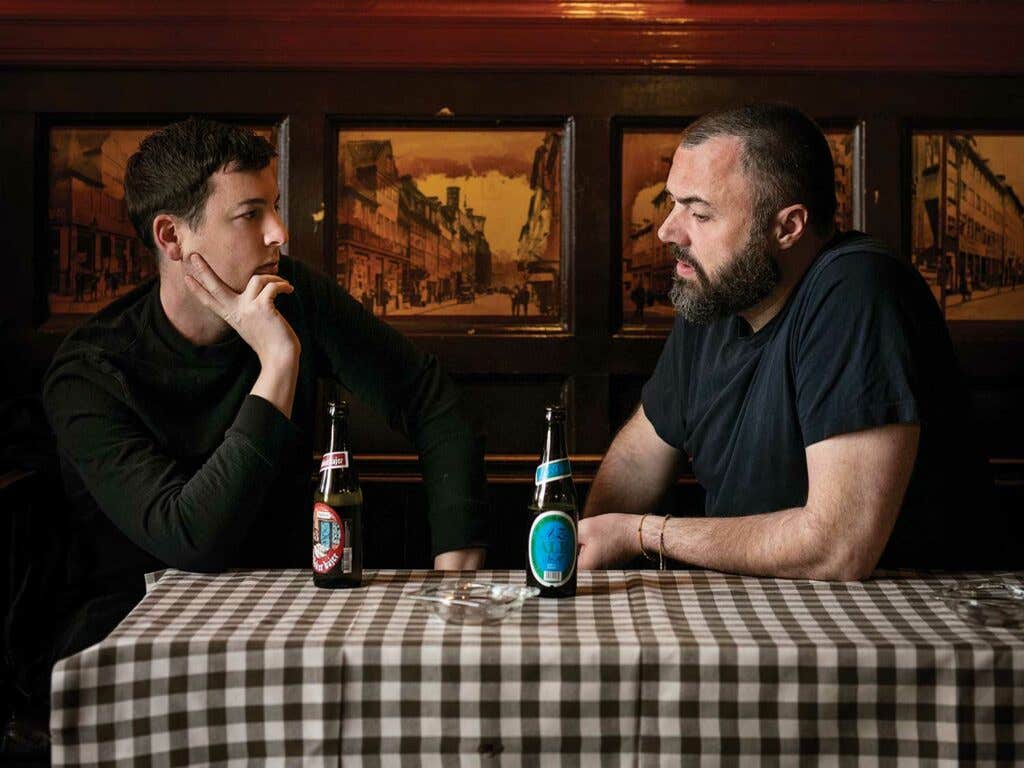
It's worth noting that Bo is not a typical Dane (or human for that matter). People here are, stereotypically, humble to a fault. Bo starred in a reality cooking show that loosely translates as "Knife to the Throat." He's been called a Danish Gordon Ramsay. I'd liken him more to Oprah if Oprah were a fierce advocate for self-actualization and public urination. But he embodies the Scandinavian ethos of absolute candor—zero patience for idle chatter. He cuts to the chase with a directness that borders on violence.
“So, what have you planned to do this week?” Bo asks, stroking his beard, turning his attention to my concrete efforts.
“Well, to be honest—”
"No!" Bo snaps. "That! That was not Danish. We do not say 'To be honest' in Denmark! What you just told me is 'Oh, now I will begin being honest.' To be Danish is to not be afraid of saying exactly what is happening at any moment, with elegance and wit."
I ask Bo how to shake the feeling that I’m a self-conscious visitor passing through a foreign land—how to, instead, feel I belong.
“Do you ever Instagram certain obligatory places or dishes to prove you’ve properly ‘done’ somewhere? I know it’s bullshit but—”
“Andrew! What is this thing you have, this real you and this other you?” Bo asks. “The way you live—you are in danger.”
A bit embarrassed, I ask to be excused, to go to the bathroom “real quick.”
“You can also do it real slow!” he shouts as I walk away.
What is it about traveling that inspires us to become other people? We take home these habits and traditions like souvenirs.
Maybe you've gone to Paris and picked up an ironic shrug, a taste for andouillette, and reflexively contrarian views. Or returned from Italy with a tendency for daily spritzes and exaggerated gesticulation.
For me, Denmark's mind-expanding food and eerily serene design has always been a draw but my love can be traced to this one moment: Out one night at 5 a.m., well after the summer sun had tapped the horizon and drifted back into the sky, I witnessed a band of locals peel off their clothes, let out giggles and roars, and dive into a canal. What fantastic freedom! I thought. To have a perfectly logical drunken whim that wasn't thwarted by modesty or the absence of towels or a fear of mutant waterborne diseases. I jumped in, too.
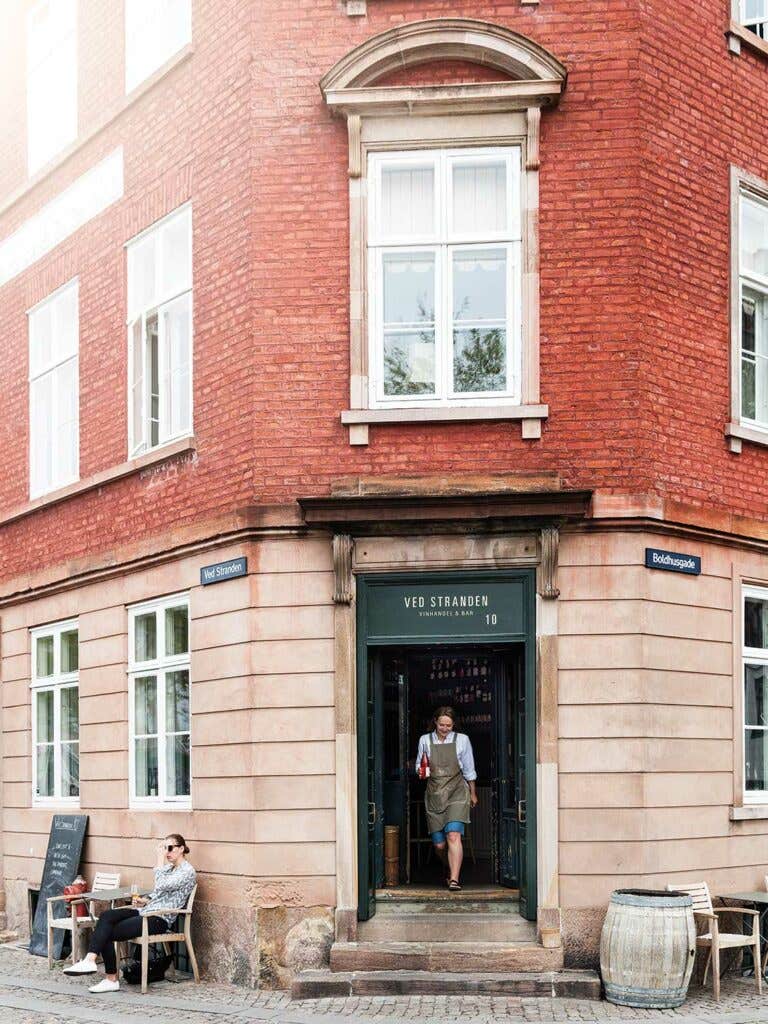
To wade into the current of real life here, I’ll need to remember how to ride a bicycle. Fifty percent of Copenhagen residents get to work on two wheels. Instead of renting one, Bo had implored me to buy one (“You will not truly care for it if you don’t own it—I can already tell you are not going to do this”), so I wander into one of the many bicycle shops in Nørrebro, a neighborhood known as much for Turkish kebab joints as stylish bars and canteens. I try to explain to Abdullah, the store owner, why I want to purchase this Scandinavian-gray fellow in the window for my seven-day stay.
“I do not understand what you are trying to say,” he says.
“I want to feel like the bike is truly mine,” I explain.
“But this makes absolutely no sense!” he says. “I cannot allow this. You will rent the bike.”
Worn down by sensible demands, I hand over the money and ride off.
Merging into Copenhagen’s wide, cerulean bike lanes is a trust fall of sorts, especially when the sky is spitting hail, as it is this afternoon. I wobble into a procession of speedy locals and do this move where my front wheel skims the curb, my bike skids to a halt, and I skip along on one foot in search of my balance. A woman in high heels breezes by while lighting a cigarette with both hands.
Eventually, I catch a rhythm in the right-hand slow lane. When you move through the city by bike, it opens up. Pedaling anywhere is twice as fast as a cab, bus, or metro, plus you’ve got the added thrill of moving among locals in the way that locals prefer to move.
It’s Friday, late afternoon, and I’m heading down the central drag of Gothersgade with no particular destination in mind. I take a right at the King’s Garden and point my three-speed Cykelstad toward the first place in the city that really charmed me, Ved Stranden 10, a waterfront wine bar that sits opposite Christiansborg Palace.
As the Danish welfare system has attempted to organize happiness, Ved Stranden 10’s owners Christian Nedergaard and Sebastian Rind Nellemann have attempted to organize another unorganizable state: spontaneity. Situated in what looks like a minimally decorated living room, their wine bar has no list. All that stands between you and the cellar’s thousand or so bottles is a conversation with another person, one trained in the art of wine matchmaking.
“I wanted to create a space where I and other people could function as humans,” says Nedergaard, who served in the Danish army before getting into hospitality. “I don’t hire drones—I hire people with a certain empathy.”
It’s a common complaint that Denmark has chilly service, but I’d wager no one who’s said that has been greeted by Alisa, whose presence is warm and serene. She leads me to a communal table and asks what I’m in the mood for.
I usually, thoughtlessly, fall back on a few preferred varietals and can’t remember the last time I’d considered how wine can mirror your emotions in a particular place and time. Challenge me, I say. I’m open to lots of weird things that aren’t a heavy red.
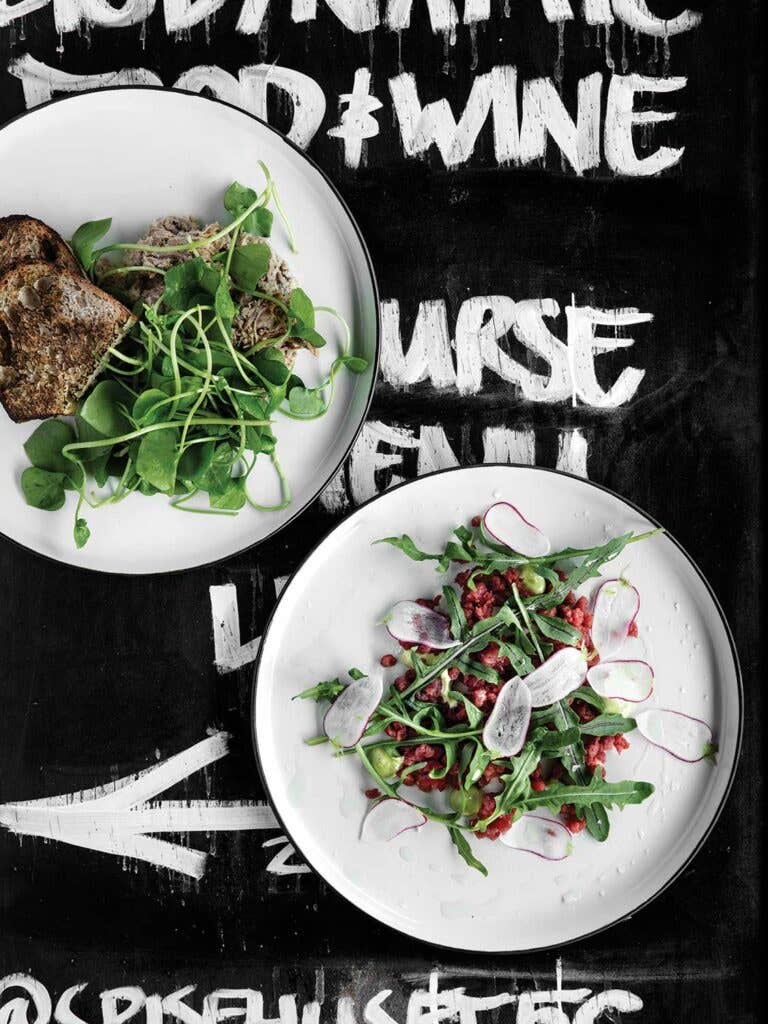
“Oh, I wasn’t thinking of red for you anyways,” she assures me.
Alisa returns with two bottles: a white that tastes like burgundy but is actually from the Loire and an Austrian pétillant naturel—both pretty but not quite right for whatever mood I'm working to feed. In New York, I'd feel so awful someone had spent 5 minutes rooting around to find something I liked that I would have just faked loving one. In the spirit of Danishness, I pass on both, in a direct and friendly manner. She seems delighted and promptly returns with a third: a viscous, briny, oxidized rosé from a Greek producer, Ligas. It's bizarre and perfect.
Later, after a tall pour of chalky sancerre made by Sébastien Riffault, whose vineyard Alisa once worked on, I'm buzzed and my phone is nearly dead. It's 5 p.m. and the bar begins filling up with locals whose precise 37.5-hour work weeks have come to an end. A rowdy group of four joins my table and orders a bottle of pinot noir. Sayeh, one of my new tablemates, a glamorous, self-possessed, shoulder-padded doctor who could have starred in Dynasty, leans over and cracks a joke, in dansk. "Oh, you're not Danish!" she says.
“Well, 20 percent if you believe a website I mailed my spit to.”
“Oh, she did one of those, too,” her friend Henrik says. “Watch out! She is Russian.”
Before I can refuse the offer, they’ve poured me a glass of their wine.
Skål!
Where French and Germans cheers to your health, Scandinavians literally yell “skull”—as in pass me the skull of the human we just scalped, the skull that, in Viking times, would have spilled mead between hands. The no-nonsense thing runs deep.
Sayeh’s group invites me to join them for dinner next door. “Come, you’re going with us,” they say while handing me my jacket. I’ve learned there’s not much use in arguing with one, let alone four, resolute Danes. So I go with the flow.
We settle the bill and walk across the street to Christian Nedergaard’s second act, the new Japanese-inflected Admiralgade 26. There, we guzzle plenty more wine, including an orange so coppery and savory it reminds me of a soothing broth, and eat beef tartare and charred leeks blanketed in pecorino.
I’ve spent a lot of time traveling alone and am a fan of eating whatever, wherever, whenever I want. But you know what you can’t do by yourself? Take a heaping bite of delicate lumpfish roe—a short-lived springtime darling that is to Copenhagen what ramps are to the Eastern United States—and turn to another soul, spoon in hand, to affirm your ecstatic delight. Shared food tastes the same as solo food with the added benefit of drawing you closer to other people.
We part ways around midnight but not before they point out, aha!, I’ve got a bike made for women, which, as it turns out, is a very postmodern Scandinavian move. I proudly ride my misgendered bike home. As I pass over Queen Louise’s Bridge, the city lights glitter in the still lakes and a digital monitor clicks. I’m counted among the 27,893 Danes who’ve crossed today.
"Picture an American entering a room," Kristoffer Albris says, sitting under mismatched curtains and a mounted transistor radio at a bohemian café in the inner city that he has rightly suspected would remind me of New York's East Village. "They would probably greet someone and proceed with skillful small talk."
Small talk, like smiling at strangers, is one of the Americanisms I’ll need to shed if I’m going to succeed in my quest to become Danish.
Albris, an even-tempered anthropologist who teaches Danish culture classes at the University of Copenhagen, says Danes don’t have the same switches for casual conversation. “A Dane might feel as if they’re placing a burden on someone to enter into a relationship they didn’t ask for.”
It’s a radical degree of consideration that relates to a national Ten Commandments of sorts. The Law of Jante, as it’s known, boils down to this: Us before You. It’s the opposite of individualism, and while it’s a weak doctrine today in modern cities like Copenhagen, its presence still lingers everywhere.
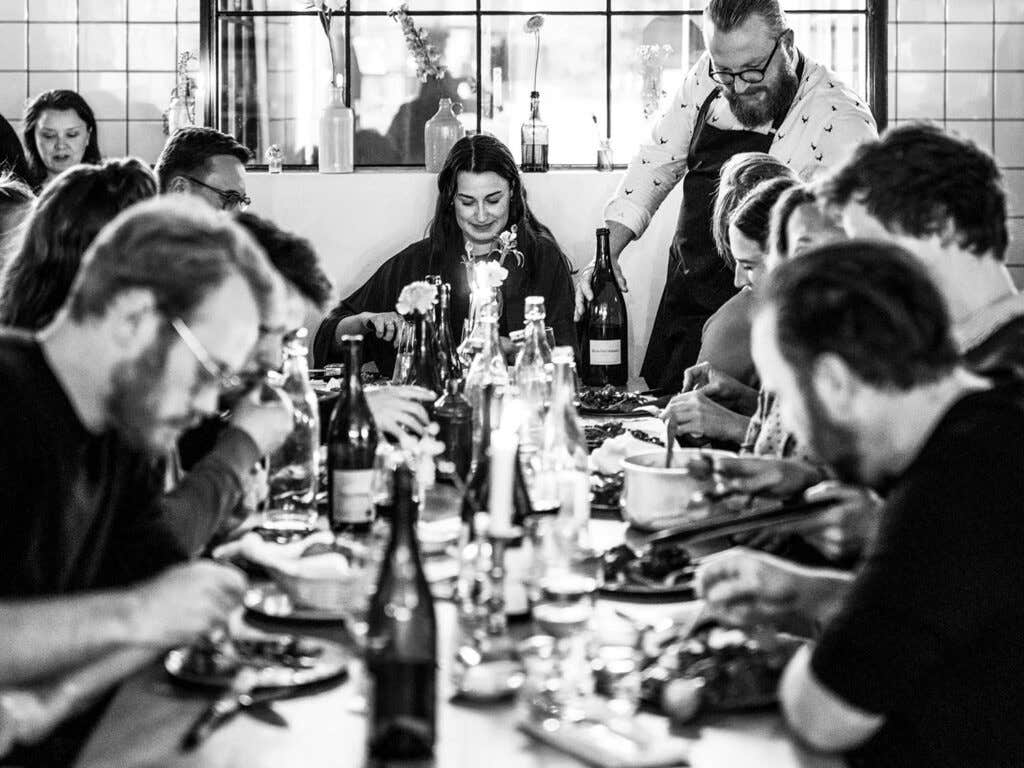
Later that afternoon, I get some real-life lessons in the Law of Jante while indulging in a peak Danish fantasy: baking lowercase-D danishes, with Danish people, at prolific restaurateur Claus Meyer's cooking school.
I’m early to class and find a seat at a table with a selection of breads, local cheeses, and beers from nearby brewery Nørrebro Bryghus. Slowly, my 15 other classmates trickle in, all in duos except for one other solo guy at the opposite end of the table. It’s like the first day of school except that here there are no handshakes, no hellos. It’s as though we are a room full of ghosts who can’t see one another. I, lonely ghost in the corner, spread blue cheese on a crusty roll in silence.
Our instructor, in a white uniform and severe platinum hair, arrives. “Hej studerende,” she begins.
I've been warned the class would be in Danish but, American privilege, assumed there would be some occasional English-translation sidebars. There are not. Remembering us before me, I keep quiet. At points I even nod—Brød? Hell yeah, we're making brød!—and, for a brief moment, feel like one of them, too. Until we begin the clockwise introductions: Agnes, Kasper, Christina…
“Hej hej!” I say, savoring my last moment in hiding. “My name’s Andrew, and I have no clue what just happened for the last 20 minutes.”
Yes, there is laughter but also sounds of pure shock. The woman next to me moans and grips her chest. “Why would you do that to us!” She feels terrible I’ve not known what’s going on, and I feel terrible that she feels terrible. Finally a young woman named Benni speaks up: “Don’t worry! We will help you!”
Benni, her friend Sophie, and the other solo baker, Tonni, volunteer to take me under their wing: “Team NY,” Tonni says with a sweet grin. We tie on aprons while the teacher begins a demonstration.
"She's just telling us to make a basic pastry dough," Tonni translates. "I've made it before and can walk you through it." We'll be using the dough to make frøsnapper, poppy-seed twists that have a hint of marzipan but are savory enough, I'm told, to fall under the "breakfast danish" species.
The presentation ends and the other groups sprint to the mixers, frantically cracking eggs and measuring flour. At one point, a woman holding a bowl weaves between stations and shouts "Corner!" "Jesus, I don't know what they're in such a rush for!" Benni says, passing me a lager. "We're not on the Great Danish Bake Off." (It really exists.) Unlike anything else named after New York, our team moves at a mellow pace. We alternate mixing, kneading, laminating, and chilling the dough with Tonni's guidance.
I ask Benni if these classes are popular and she shrugs.
“Not really. We just thought it would be fun to do as friends,” she says, as Sophie Snapchats her pounding chilled butter into the dough. “Here, you try. It’s fun,” she says, handing me a rolling pin.
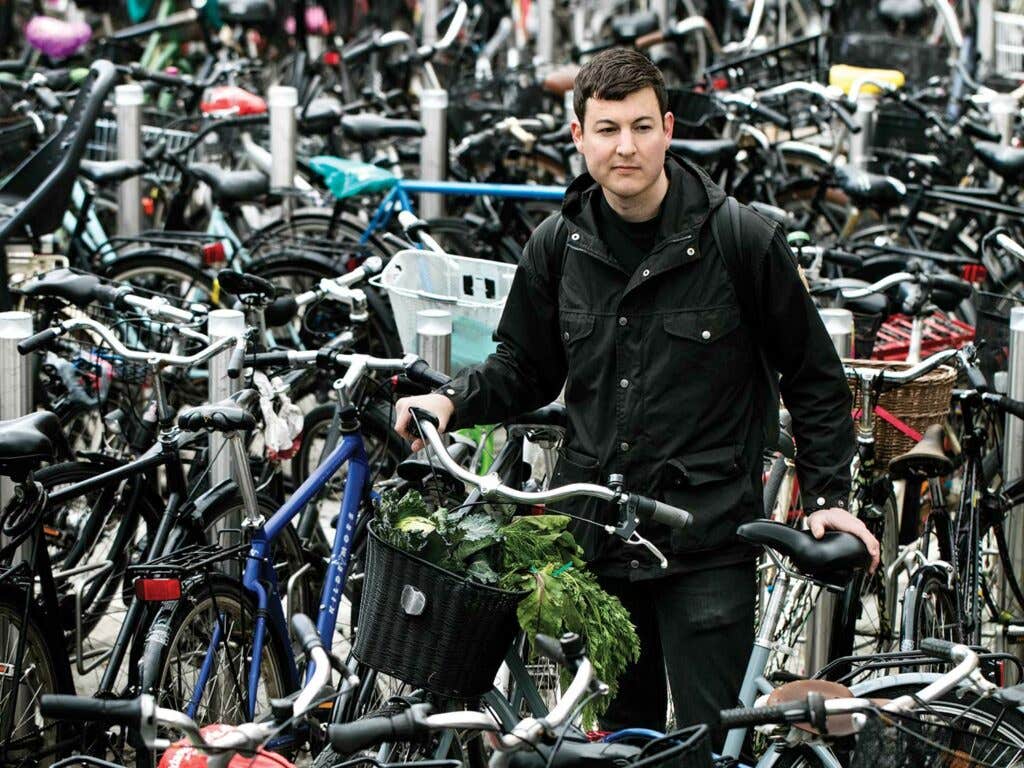
I give it a few whacks. Tonni then shows me how to fold the dough in thirds. I don’t think I’ve ever worked on a team of any kind that, with so little negotiation, took such equal turns. When the twists eventually emerge from the oven, we enjoy them, our little quad, in the corner.
Before I leave, the woman I nearly sent into cardiac arrest looks my way, flour rimming her brow, and ekes out something like a smile. I make the same pained face back since I haven't learned the word for sorry.
Before leaving for Copenhagen, I explained my mission to Ambassador Anne Dorte Riggelsen, Consul General of Denmark in New York. In the gentlest of terms, the ambassador informed me that I had failed before I even began. "I love that Americans have such a playfulness with identity," she said. "But Danes, we have a strong sense of who we are."
Though full assimilation would be impossible, she did have some useful, easy-to-follow advice for me.
“Danes are storytellers,” she said. “While you’re visiting our beautiful restaurants, ask ‘What are they trying to say?’ You’ll understand something about us.”
I eat my way through town with open ears.
At Geist, biting into coffee-braised shiitake mushrooms sprinkled with cashews and an assertive wasabi toffee and cream dessert, I can almost hear Bo Bech proclaim: To be Danish is to be curious and bold! Christian Puglisi's religiously organic Bæst shows me that the story of pizza is not complete. There are still new things to be done, like top blistered pies with preserved pine and housemade 'nduja using Denmark's exceptional pork. Palægade, a wildly popular new spot for smørrebrød, tells me that the city's cool kids aren't too cool for gnarly throwbacks, like towering open-face sandwiches of stinky cheese, raw onion, veal gelatin, and sprinkles of rum. At the popular brunch spot Møller in cool-kid zone Nørrebro, I find there's no line to order. Instead, I observe a crowd slowly approach the register, one by one, in the order in which they arrived, according to some mysterious system. My silent number is called and I ask for a bowl of øllebrød, a porridge made of dark rye bread crumbs and beer, which doesn't speak back but does taste delicious, like richer, tangier oatmeal.
One evening, I meet an expat friend, Lisa, a professor and food writer, at the opening party of Apollo, a new restaurant housed in a majestic fortress that faces a row of Crayola-colored townhouses. The chef is Frederik Bille Brahe, whose meatless Atelier September is a hit with the fashion set and René Redzepi alike. There’s no guest list or bouncer tonight, just an open gate welcoming whoever wants to wander in. And an open bar serving natural rosé.
Lisa, it turns out, is friends with Alisa from Ved Stranden 10, who gives me a familiar hug. I’m reminded of a friend of a friend in New York whom I’ve met no less than seven times but who still pretends we’re perfect strangers.
"I was actually watching the door and didn't guess that you would be the American," Klaus Thomsen says, when we meet at the airy, industrial Frederiksberg outpost of his Coffee Collective, which brews distinctive beans that have been traded directly with their producers.
Entering a room in the Danish way means doing the opposite of making an entrance. Trying to acclimate to local custom, I’d walked into the coffee shop gazing down, attempting invisibility, and approached the barista asking for Klaus in a decibel range that was potentially inaudible.
Apparently it worked.
“You seem to be naturally…” Klaus says, but stops short of saying it. “I sense you understand the Danish mentality.”
Shyness, he means, a quality we both share if we’re being perfectly honest, which we are. Klaus may just be the most Danish Dane I’ve met so far. He’s remarkably earnest, self-assured, and infectiously humble.
We talk about coffee (the Danish sweet spot is around 4 p.m.) and the ubiquity of sustainable foods (available even at the most basic of convenience stores) before he shatters a fantasy of mine. No, locals don’t get off work early and casually dine on nasturtium and buckthorn. He believes the most Danish thing one can do in the capital of New Nordic cuisine is actually to eat at home.
“I dine out maybe once a month, but I know people who go out just once a year,” he tells me. “We eat in with loved ones here. Our homes are our nests.”
As it happens, I’ll have a chance this evening to observe life in the Danish nest. On my first night in town, I’d met a guy, Anders. This wasn’t on the syllabus. It just happened. And it was the sort of meeting that would usually be a one-night kind of thing but has grown to become a five-night kind of thing, which is to say I dig him, a lot. I find him refreshing. Unlike American guys, I don’t have to read tea leaves to understand what he means. He’s invited me to dine with his friends because he wants me there.
I pick up a bottle of wine, head to Anders’ apartment for dinner, and am greeted by a kiss and a pile of shoes by the door. Anders and I are both journalists. My circle of friends is 75 percent media. His, I’ve noticed, includes off-duty drag queens, members of parliament, and standing in his kitchen now, Max, a German psychology student, and James, a Canadian expat and dancer in the Royal Danish Ballet. This chromatic assortment makes me wonder how many connections I’ve passively declined over the years.
We pour wine and migrate to the dining room, which is lit with a constellation of candles. The table is set for tonight's feast: a roasted root vegetable salad of parsnips, beets, and carrots; chickpea frikadeller (pan-fried meatballs); and a lactose-free tiramisu that Anders requested Max make after observing me, lactose-tolerant human, order a soy milk in my coffee the day before. I apologize for the consequences of my silly American affectation.
“Oh, it is okay,” Max says. “I had to add a little cream to it anyways.”
We laugh, skål, and take turns gathering food.
James asks me about my baking class and I explain it went well—besides the part where I sat at a table with 15 strangers for half an hour who didn’t say a word to me.
“This is not normal,” says Anders.
“Oh my god! No, this is the most Danish thing ever,” argues James, who’s spent nearly a decade in the city. “You’re not even supposed to smile at children here!”
“You are not supposed to smile at the children?” Max asks.
“No! It violates the Danish bubble.”
To Anders' credit, I'm not sure he lives under the same bubble. Just as some Americans are trilingual with low cholesterol, Anders jokes with strangers and makes first moves on first dates. A lot has been written over the past year about hygge, the untranslatable feeling of comfort that Danes cultivate in their homes (which is perhaps better understood by its antonym, uhygge, abject horror). But as the candles burn, and a Nordic R&B singer coos, and Anders grabs my hand under the table for the entirety of our shared meal, I approach an understanding.
"There's this theory in social science about the front and the back stage," Kristoffer Albris, the anthropologist, had told me when we met. The front stage, he explained, is the person you aspire to be. The back stage is your true self. I sometimes find the distance between these two exhausting.
“Ah! This is probably why you aspire to be Danish,” he said. “The gap between the front stage and back stage—it’s short here. Perhaps the most offensive act in Denmark is to behave inauthentically.”
It reminds me of my attraction to Anders. This curly-haired Dane, who butters his croissants and holds the most startling eye contact, isn’t bogged down by the tyrannical irony I struggle to evade. He seems profoundly himself. Being with him feels as effortless as being alone.
Before I leave, we spend one perfect day together, which begins with breakfast.
“Don’t forget the candles!” Anders yells from the kitchen.
“For breakfast?”
“For any Danish meal!” I poke around and discover a cabinet full of candles. I light one and then two and then, why not, three. Anders emerges from the kitchen with an expectant smile.
“Try this,” he says, feeding me a piece of toasted rye slathered in butter and piled with razor-thin sheets of chocolate called Kæmpe. “Every Dane eats these as a kid.”
And I get it: the slick of good cultured butter, the ghostly sweet chocolate, the comfort of this hearty, sensible, altogether familiar bread. What’s not to like? Eating it by candlelight at breakfast, I experience an easy equilibrium, an absentminded contentedness that’s maybe, humbly, just a little bit Danish.
How to Eat Like A Dane
Reporting by Stacy Adimando
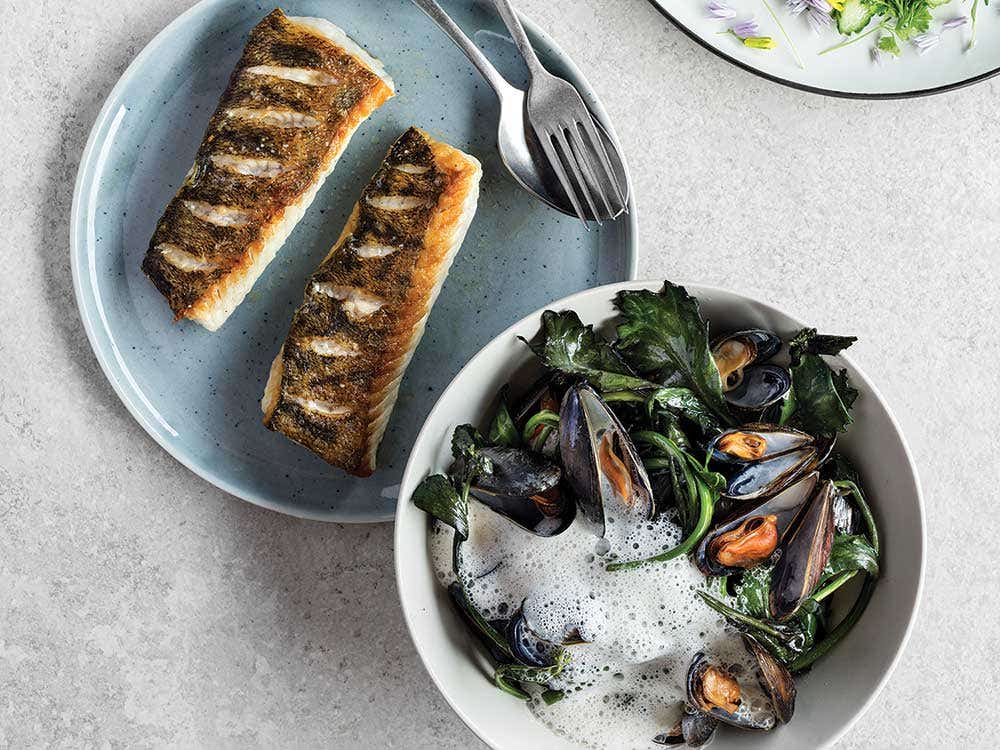

Keep Reading
Continue to Next Story
